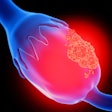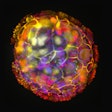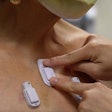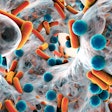
Improved chip-based sensing devices may one day be used to detect or analyze a wide range of substances, according to research published Thursday in Optica.
The research lays the groundwork for sensitive, portable optofluidic sensing devices that can perform a variety of medical tests simultaneously — even involving completely different bioparticles at widely varying concentrations.
Many chip-based testing devices have been developed since biomolecules come in different forms and amounts. However, these devices are often designed to focus on one target or test.
Concentrations of various proteins used as disease biomarkers may vary by over ten orders of magnitude. Therefore, the research team sought to develop a testing platform for multiple types of analyses based on optofluidic chips, which combine optics and microfluidic channels on a silicon or plastic chip. Particles are detected by illuminating them with a laser beam, then measuring particle response with a light-sensitive detector.
Current platforms detect many different particle types, including nucleic acids, proteins, viruses, bacteria, and cancer biomarkers. However, separate detectors and signal analysis techniques generally are used to measure particles with high and low concentrations; a particle type present at high concentrations can overwhelm smaller signals from other particle types present at low concentrations.
New signal processing methods can be used to detect particles in both high and low concentrations simultaneously. To do this, the researchers combined different signal modulation frequencies: high frequency laser modulation to distinguish single particles at low concentrations, and low frequency laser modulation to simultaneously detect large signals from many particles at high concentrations. A feedback loop detects large signals and adjusts the input laser power accordingly.
The researchers also developed a fast algorithm to identify single particle signals at low concentrations in real time. Machine learning helped recognize signal patterns so different particle types could be accurately distinguished.
The researchers tested their new signal analysis approach by pumping optofluidic biosensor chips with a solution of nanobeads at different concentrations, and with different fluorescence colors. They were able to correctly identify both yellow-green and crimson bead concentrations even though their concentrations differed by a factor of more than 10,000 in the mixture.
While their work advances a specific integrated sensor based on optical fluorescence signals, the researchers said that the signal analysis technique can be used with any time-dependent signal that covers a wide concentration range. Such signal analysis advances may better enable device operation in point-of-care settings, where signal quality can be poor and data analysis is required in real time. The team’s optofluidic biosensing technology is being commercialized by the medical device company Fluxus.
“This work is our latest step in developing integrated optofluidic sensing devices that are sensitive enough to detect single biomolecules and work over a very wide range of concentrations,” Holger Schmidt, of the University of California’s W.M. Keck Center for Nanoscale Optofluidics, said in a statement. “This can be done with a single method, which allows us to simultaneously measure and distinguish multiple particle types at once, even if they have very different concentrations.”



















